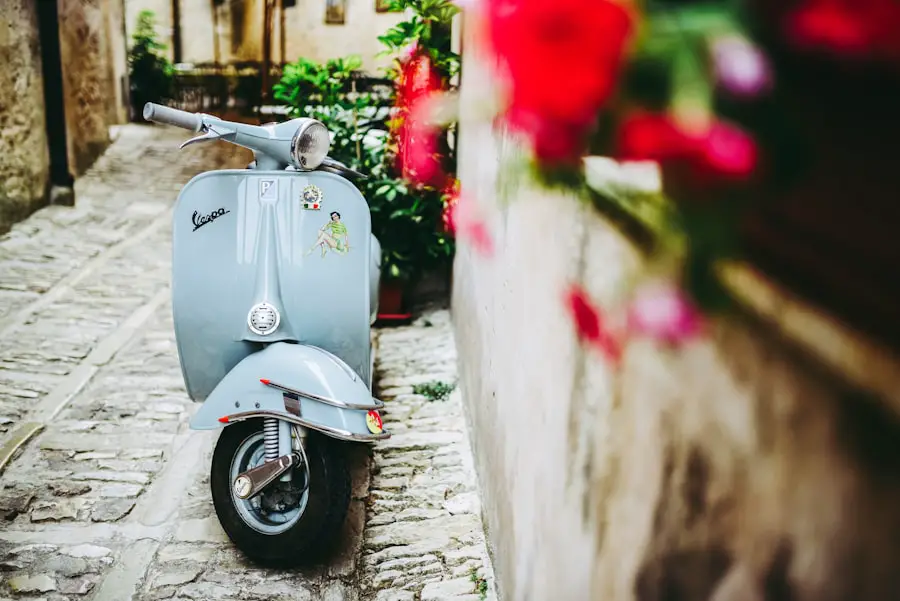Spain and Italy, two of the most captivating countries in Europe, are renowned for their rich histories, diverse cultures, and stunning landscapes. Both nations boast a wealth of artistic heritage, from the architectural marvels of Antoni Gaudí in Barcelona to the Renaissance masterpieces found in Florence. Spain, with its vibrant flamenco music and tantalizing tapas, contrasts beautifully with Italy’s romantic gondola rides in Venice and the culinary delights of pasta and pizza.
Each country offers a unique tapestry of experiences that attract millions of visitors each year, making them prime destinations for travelers seeking both adventure and relaxation. The geographical diversity of Spain and Italy further enhances their appeal. Spain’s varied terrain includes the sun-drenched beaches of the Costa del Sol, the rugged mountains of the Pyrenees, and the lush vineyards of La Rioja.
Italy, on the other hand, is home to the rolling hills of Tuscany, the dramatic cliffs of the Amalfi Coast, and the serene lakes of Northern Italy. This geographical variety not only provides stunning backdrops for exploration but also influences local customs, cuisine, and festivals. Understanding the best times to visit these countries can significantly enhance a traveler’s experience, allowing them to immerse themselves in the local culture while enjoying favorable weather conditions.
Key Takeaways
- Spain and Italy offer a rich cultural experience with diverse landscapes, historical sites, and delicious cuisine.
- Spring is the best time to visit for mild weather and blooming landscapes in both Spain and Italy.
- Summer is perfect for exploring the beaches and enjoying the vibrant festivals in Spain and Italy.
- Fall is a great time to visit for enjoying the harvest season and cultural festivities in both countries.
- Winter is ideal for exploring the cities and engaging in winter sports in Spain and Italy.
Spring: The Best Time to Visit for Mild Weather and Blooming Landscapes
Spain in Bloom
In Spain, cities like Seville and Córdoba are adorned with blossoming orange trees, filling the air with a sweet citrus scent. The famous Feria de Abril in Seville, held in April, is a highlight of the season, showcasing traditional Andalusian culture through flamenco dancing, horse parades, and colorful casetas (tents) filled with food and drink.
Italy’s Floral Renaissance
Italy also experiences a renaissance in spring as its landscapes transform into a patchwork of wildflowers. The countryside of Tuscany is particularly breathtaking during this season, with fields of sunflowers and poppies painting the hills in vibrant hues. The famous Tulip Festival in Florence celebrates this seasonal beauty, attracting visitors from around the world to witness stunning floral displays.
Outdoor Adventures and City Delights
Spring is an ideal time for outdoor activities such as hiking in the Dolomites or exploring the coastal paths of Cinque Terre without the sweltering heat of summer. The mild temperatures also make it comfortable for sightseeing in cities like Rome and Venice, where tourists can wander through historic streets and enjoy al fresco dining.
Summer: Exploring Spain and Italy’s Beaches and Festivals

As summer arrives, Spain and Italy become bustling hubs of activity, drawing sun-seekers to their picturesque beaches and lively festivals. The Mediterranean coastline of both countries offers an array of stunning beaches that cater to every type of traveler. In Spain, the Balearic Islands—particularly Ibiza and Mallorca—are famous for their crystal-clear waters and vibrant nightlife.
Visitors can indulge in sunbathing during the day and dance the night away at world-renowned clubs. The Costa Brava also attracts beachgoers with its hidden coves and charming seaside towns like Tossa de Mar. Italy’s summer beaches are equally enticing, with destinations such as Positano on the Amalfi Coast offering breathtaking views and luxurious relaxation.
The beaches of Sardinia are known for their pristine sands and turquoise waters, making them a favorite among both locals and tourists. Summer is also synonymous with festivals in both countries. In Spain, La Tomatina—a unique tomato-throwing festival held in Buñol—draws thousands of participants eager to engage in this messy yet exhilarating event.
Meanwhile, Italy hosts numerous summer festivals celebrating everything from food to music, such as the Umbria Jazz Festival in Perugia, which attracts jazz enthusiasts from around the globe.
Fall: Enjoying Harvest Season and Cultural Festivities
| Harvest Season Activity | Location | Date |
|---|---|---|
| Pumpkin Patch Visit | Local Farm | October 10th |
| Apple Picking | Orchard | September 25th |
| Harvest Festival | Town Square | October 15th-17th |
| Oktoberfest Celebration | Beer Garden | September 30th-October 3rd |
As summer fades into fall, Spain and Italy enter a season marked by harvest celebrations and cultural festivities that reflect their agricultural roots. In Spain, the grape harvest is a significant event, particularly in regions like La Rioja where wine production thrives. The Fiesta de la Vendimia de Haro celebrates this time with wine tastings, parades, and traditional music, allowing visitors to immerse themselves in local customs while savoring some of the finest wines in the country.
Italy’s fall season is equally vibrant, particularly in regions known for their culinary traditions. The grape harvest culminates in various wine festivals across Tuscany and Piedmont, where visitors can participate in tastings and vineyard tours. The Sagra dell’Uva (Grape Festival) in Marino celebrates the local wine production with parades, music, and plenty of food stalls offering regional delicacies.
Additionally, autumn is truffle season in regions like Umbria and Piedmont, where food lovers can indulge in truffle hunting experiences followed by gourmet meals featuring this prized ingredient.
Winter: Exploring Spain and Italy’s Cities and Winter Sports
Winter casts a different charm over Spain and Italy as both countries embrace the colder months with festive spirit and opportunities for winter sports. In Spain, cities like Madrid and Barcelona transform into winter wonderlands adorned with holiday lights and decorations. The Christmas markets that pop up throughout these cities offer visitors a chance to experience local traditions while sampling seasonal treats such as turrón (nougat) and churros with hot chocolate.
The Three Kings Day celebration on January 6th is particularly noteworthy; it features parades filled with colorful floats and costumed characters that delight children and adults alike. Italy’s winter landscape is equally captivating, especially in regions known for skiing such as the Dolomites or Aosta Valley. These areas offer world-class ski resorts where enthusiasts can enjoy pristine slopes surrounded by breathtaking mountain scenery.
Beyond winter sports, cities like Venice take on a magical quality during this season; the fog that often envelops the canals creates an ethereal atmosphere perfect for exploring historic sites without the usual crowds. Additionally, winter is an excellent time to savor hearty Italian cuisine—think rich risottos or warming polenta dishes—while cozying up in traditional trattorias.
Off-Season Travel: Tips for Avoiding Crowds and Saving Money

Traveling during the off-season can be an incredibly rewarding experience for those looking to explore Spain and Italy without the throngs of tourists that typically flood these destinations during peak times. The months of late fall (November to early March) often see fewer visitors, allowing travelers to enjoy popular attractions at a more leisurely pace. For instance, visiting iconic sites like the Alhambra in Granada or the Colosseum in Rome during these months means shorter lines and a more intimate experience.
In addition to avoiding crowds, off-season travel can lead to significant savings on accommodations and flights. Many hotels offer discounted rates during these months to attract guests, making it possible to stay in more luxurious accommodations at a fraction of the price. Additionally, travelers can take advantage of lower airfare costs when booking flights outside of peak travel periods.
It’s also worth noting that many restaurants offer special menus or discounts during off-peak times to entice diners. This combination of affordability and tranquility allows for a more immersive experience as travelers can engage more deeply with local culture without feeling rushed.
Events and Festivals: Not-to-Miss Celebrations Throughout the Year
Spain and Italy are renowned for their vibrant events and festivals that showcase their rich cultural heritage throughout the year. In Spain, events like Semana Santa (Holy Week) are deeply rooted in tradition and attract visitors from around the world. Cities such as Seville come alive with processions featuring elaborate floats adorned with religious icons accompanied by solemn music—a powerful experience that reflects Spain’s deep religious roots.
Italy also boasts an impressive calendar of events that highlight its artistic legacy. The Venice Carnival is one such celebration that captivates visitors with its elaborate masks and costumes. Held annually before Lent, this festival transforms the city into a fantastical realm where participants engage in masquerade balls and street performances.
Additionally, events like Palio di Siena—a historic horse race held twice each summer—draw crowds eager to witness this thrilling competition steeped in tradition.
Choosing the Best Time to Visit Spain and Italy Based on Personal Preferences
When considering a trip to Spain or Italy, personal preferences play a crucial role in determining the best time to visit these enchanting countries. Whether one seeks mild weather for outdoor exploration in spring or desires to bask under the summer sun on picturesque beaches, each season offers unique experiences that cater to different interests. Fall’s harvest celebrations provide an opportunity for culinary enthusiasts to indulge in local flavors while winter invites travelers to embrace festive traditions amidst stunning cityscapes.
Ultimately, understanding what each season has to offer allows travelers to tailor their journeys according to their desires—be it cultural immersion through festivals or relaxation on sun-kissed shores. By aligning travel plans with personal interests and seasonal highlights, visitors can create unforgettable memories while exploring all that Spain and Italy have to offer throughout the year.
FAQs
What is the best time to travel to Spain and Italy?
The best time to travel to Spain and Italy is during the shoulder seasons of spring (April to June) and fall (September to October). During these times, the weather is mild, the crowds are smaller, and the prices are more affordable.
What is the weather like in Spain and Italy during the best time to travel?
During the spring and fall, the weather in Spain and Italy is generally mild and pleasant. Temperatures are comfortable for sightseeing and outdoor activities, and there is less chance of extreme heat or cold.
Are there any specific events or festivals to consider when planning a trip to Spain and Italy?
Both Spain and Italy are known for their vibrant festivals and events throughout the year. Some popular events to consider when planning a trip include the Semana Santa (Holy Week) in Spain and the Carnevale in Italy. These events can add a unique cultural experience to your trip.
What are the peak tourist seasons to avoid when traveling to Spain and Italy?
The peak tourist seasons in Spain and Italy are during the summer months of July and August. During this time, popular tourist destinations can be crowded, accommodations may be more expensive, and the weather can be very hot.
Are there any specific considerations for traveling to Spain and Italy during the best time to visit?
When traveling to Spain and Italy during the shoulder seasons, it’s important to be aware of local holidays and events that may affect travel plans. It’s also advisable to book accommodations and transportation in advance, as these can fill up quickly during the best time to visit.
